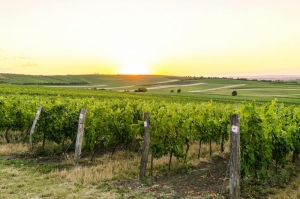International Cap Classique Day: Celebrating South Africa’s Hero Sparkling
Every year on the 1st of September wine lovers around the world pop the cork to celebrate International Cap Classique Day. This day is all about the history, uniqueness and craftsmanship of Méthode Cap Classique (MCC) – South Africa’s answer to the world’s best sparkling wines. With roots in tradition and a sense of innovation MCC has become the benchmark of South African winemaking. International Cap Classique Day is a platform to educate consumers about the history, production methods and diversity of MCC. It’s also an opportunity to discover and enjoy the many styles available from crisp and zesty Blanc de Blancs to rich and complex vintages. Whether you’re hosting a party or having a quiet night in Cap Classique is the perfect wine for any occasion. Let’s dive into the origins of Cap Classique, its rise to international fame, the winemaking process and what this day means.

The Origins of Cap Classique
The story of Cap Classique starts in the early 1970s when a group of South African winemakers decided to create a sparkling wine that could rival the Champagne of France. Inspired by the méthode champenoise, the traditional method used to make Champagne, they adapted the process to the South African terroir. And thus Méthode Cap Classique was born – a sparkling wine made in the same laborious process of secondary fermentation in the bottle but with a South African spin.
The first Cap Classique was made in 1971 by the renowned Simonsig Estate in Stellenbosch. Frans Malan, the pioneer behind this innovation, called the wine “Kaapse Vonkel” (Cape Sparkle) and it was an instant hit. The success of Kaapse Vonkel paved the way for a new category of South African sparkling wine that would grow in quality and stature over the years.

The Rise of Cap Classique
Over time MCC has moved from a niche product to a mainstay of South African winemaking. Winemakers across the country took up the challenge of making high quality sparkling wines, experimenting with different grape varieties – Chardonnay, Pinot Noir and even Pinotage. The diversity of South Africa’s wine regions – from the cool coastal areas to the warmer inland regions – provided a range of styles and expressions and added to the richness of the MCC category.
As Cap Classique improved so did its recognition globally. South African producers started winning international awards and MCC was included among the world’s best sparkling wines. Today MCC is celebrated for its finesse, complexity and ability to show the terroir of South Africa.
The Winemaking Process of Cap Classique
Méthode Cap Classique is made using the traditional method, or méthode champenoise, a laborious process that originated in the Champagne region of France. From grape to glass it’s a multi-step process each contributing to the wine’s character, finesse and complexity.
- Harvesting the Grapes: The journey starts in the vineyard where the selection of the grapes is key. Chardonnay and Pinot Noir are the main varieties used but some producers also use Pinot Meunier, Pinotage or other local varieties. The grapes are picked early, often by hand, to ensure high acidity and low sugar levels which is essential for making sparkling wine with finesse and balance.
- The First Fermentation: After picking the grapes are gently pressed to extract the juice which is then fermented in stainless steel tanks or sometimes in oak barrels. This first fermentation produces a base wine which is usually dry and neutral in flavour. Winemakers may blend different base wines from different vineyard sites or grape varieties to create a balanced and complex blend, known as the cuvée.
- Tirage and Second Fermentation: The next step is the addition of the liqueur de tirage, a mixture of sugar, yeast and wine to the cuvée. This mixture is then bottled and capped with a crown cap. The bottles are stored horizontally in a cool dark place where the second fermentation takes place inside the bottle and the bubbles form. This can take several weeks to months depending on the style of the final product.
- Aging on the Lees: After second fermentation the wine is aged on its lees for an extended period. This aging is critical in developing the rich, toasty and nutty flavours of Cap Classique. The minimum aging is 9 months but many producers age their wines for several years to achieve more complexity and depth.
- Riddling (Remuage): Once aging is complete the bottles are racked and the wine undergoes a process called riddling or remuage. The bottles are placed on special racks called pupitres and over several weeks they are gradually tilted and rotated to encourage the lees to settle in the neck of the bottle. Traditionally done by hand this process is now often done by automated machines called gyropalettes.
- Disgorging (Dégorgement): Disgorging is the next step where the sediment in the neck of the bottle is removed. The neck is frozen and the sediment plug is ejected when the bottle is opened. This leaves the wine clear and ready for the final touches.
- Dosage: After disgorging a small amount of liqueur d’expédition, a mixture of wine and sugar, is added to the bottle. This step is called dosage and determines the final sweetness level of the wine which can range from brut (very dry) to doux (sweet). The bottle is then corked and wired and the wine is left to rest for a few more months before release.

Fun Facts about Cap Classique
- Pinotage: South Africa’s own grape, Pinotage is sometimes used in the production of Cap Classique. This gives the traditional sparkling wine a local twist and adds red fruit flavours and character.
- Extended Aging: While the minimum aging for MCC is 9 months some producers go beyond and age their wines for several years. This extended aging on the lees adds more complexity with flavours of brioche, almond and honey.
- Rosé Cap Classique: Rosé Cap Classique is made by adding a small amount of red wine to the cuvée or by the saignée method where the juice has brief contact with the grape skins to extract colour and flavour.
- Terroir: The various terroirs of South Africa have a big influence on the style of MCC. Coastal regions like the Cape Winelands benefit from the cooling sea breezes and preserve the acidity in the grapes resulting in crisp and vibrant sparkling wines. Inland regions are warmer and produce MCCs with riper fruit flavours and a richer profile.
- Sustainability and Innovation: Many Cap Classique producers are practicing sustainable winemaking, organic and biodynamic farming, minimal intervention in the cellar and eco friendly packaging. Some are also experimenting with indigenous yeast strains and natural winemaking to create unique MCCs.

Conclusion
International Cap Classique Day is more than just a sparkling wine celebration; it’s a celebration of South African winemaking, innovation and the pursuit of excellence. As the world discovers and appreciates the elegance of MCC this day is a reminder of the timelessness of a wine that is truly South African. So on 1 September pop open a bottle of Cap Classique and cheers to a bright and bubbly future for this South African institution.
